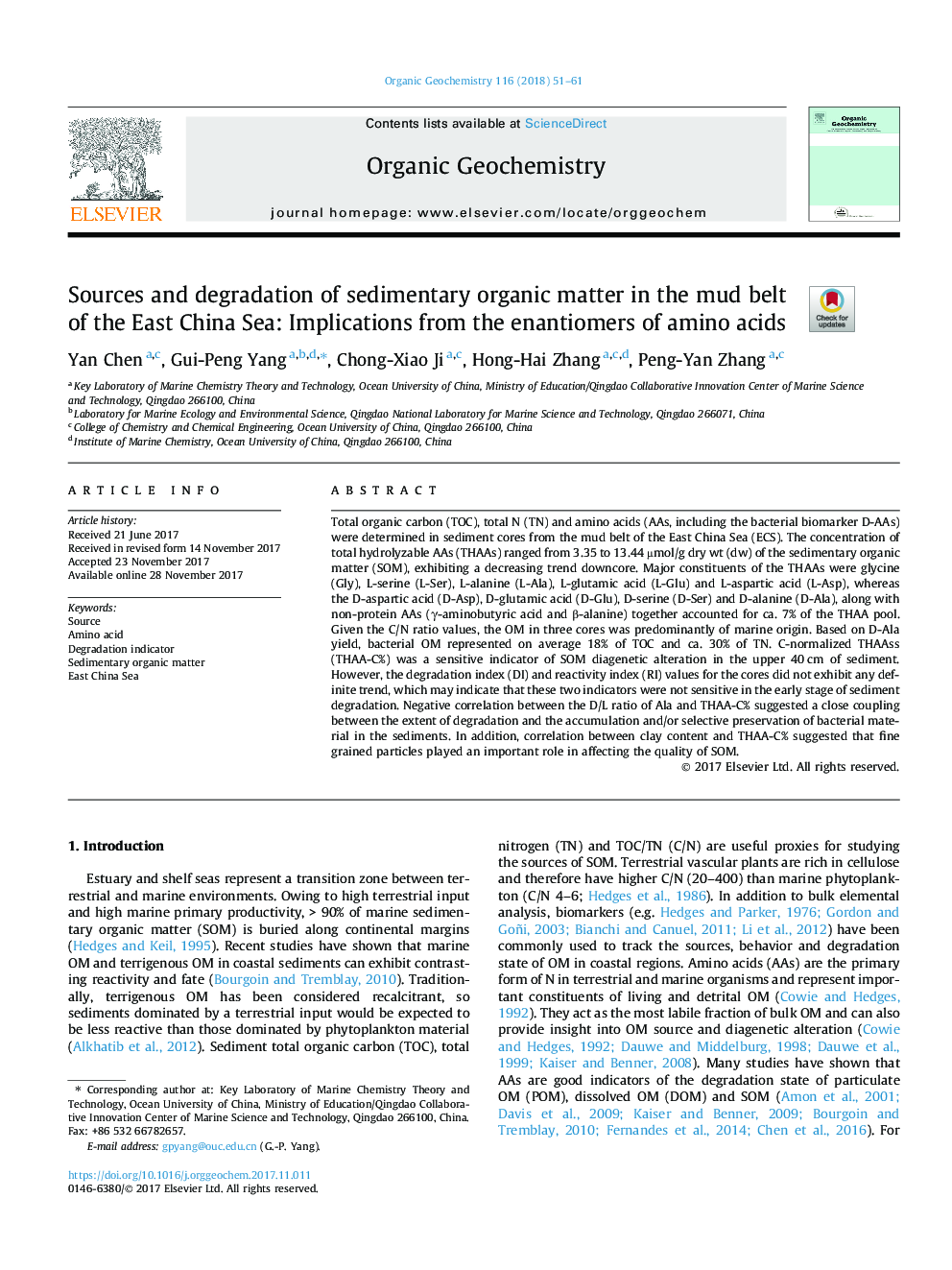| Article ID | Journal | Published Year | Pages | File Type |
|---|---|---|---|---|
| 7817057 | Organic Geochemistry | 2018 | 11 Pages |
Abstract
Total organic carbon (TOC), total N (TN) and amino acids (AAs, including the bacterial biomarker D-AAs) were determined in sediment cores from the mud belt of the East China Sea (ECS). The concentration of total hydrolyzable AAs (THAAs) ranged from 3.35 to 13.44â¯Âµmol/g dry wt (dw) of the sedimentary organic matter (SOM), exhibiting a decreasing trend downcore. Major constituents of the THAAs were glycine (Gly), L-serine (L-Ser), L-alanine (L-Ala), L-glutamic acid (L-Glu) and L-aspartic acid (L-Asp), whereas the D-aspartic acid (D-Asp), D-glutamic acid (D-Glu), D-serine (D-Ser) and D-alanine (D-Ala), along with non-protein AAs (γ-aminobutyric acid and β-alanine) together accounted for ca. 7% of the THAA pool. Given the C/N ratio values, the OM in three cores was predominantly of marine origin. Based on D-Ala yield, bacterial OM represented on average 18% of TOC and ca. 30% of TN. C-normalized THAAss (THAA-C%) was a sensitive indicator of SOM diagenetic alteration in the upper 40â¯cm of sediment. However, the degradation index (DI) and reactivity index (RI) values for the cores did not exhibit any definite trend, which may indicate that these two indicators were not sensitive in the early stage of sediment degradation. Negative correlation between the D/L ratio of Ala and THAA-C% suggested a close coupling between the extent of degradation and the accumulation and/or selective preservation of bacterial material in the sediments. In addition, correlation between clay content and THAA-C% suggested that fine grained particles played an important role in affecting the quality of SOM.
Related Topics
Physical Sciences and Engineering
Chemistry
Organic Chemistry
Authors
Yan Chen, Gui-Peng Yang, Chong-Xiao Ji, Hong-Hai Zhang, Peng-Yan Zhang,
